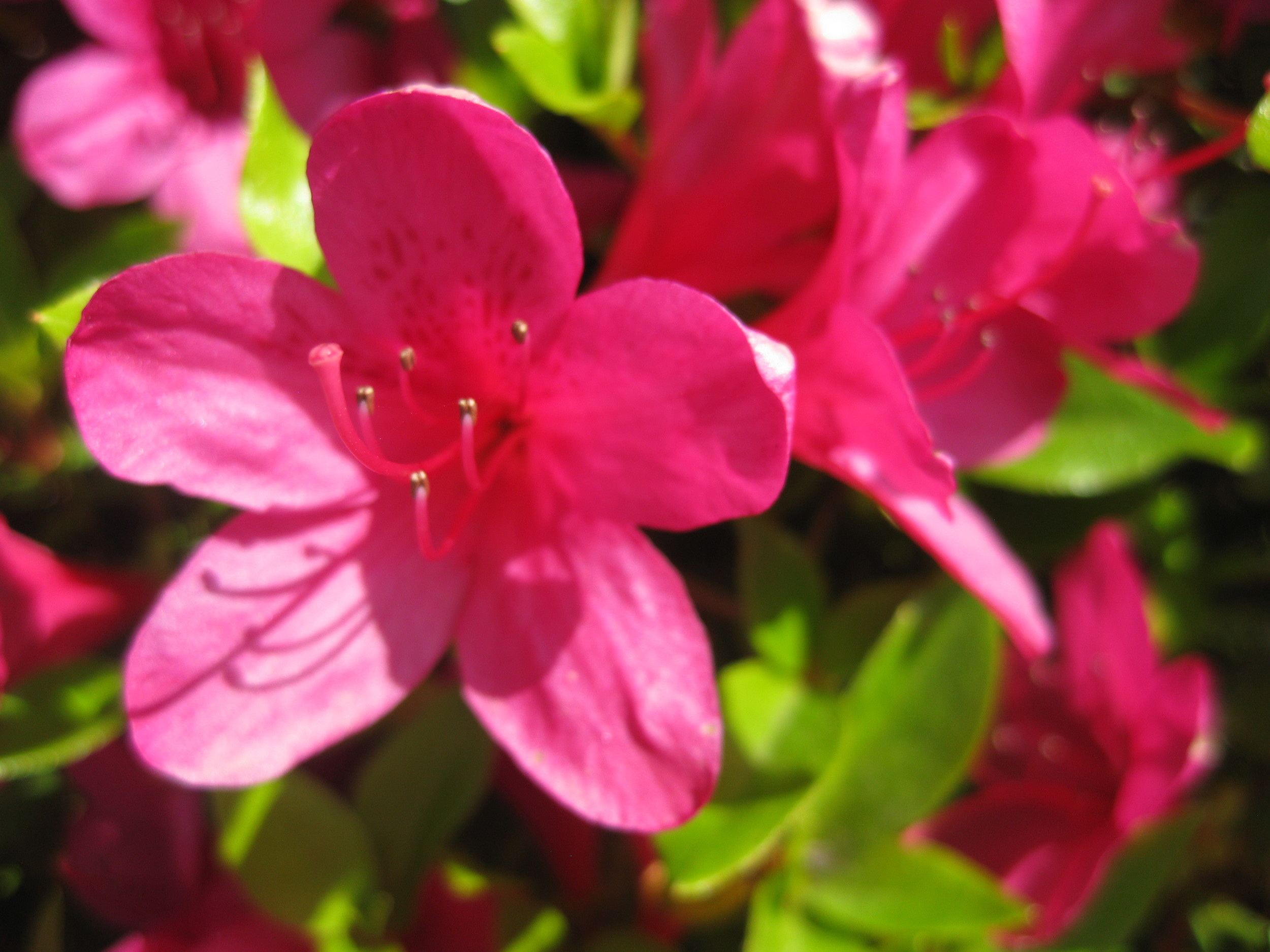Gardener's Corner: Rhododendron or Azalea?
‘Sappho’ Evergreen Azalea in the Seattle Japanese Garden. Photo: Aleksandra Monk.
There’s a lot of complexity and confusion in the answer. Rhododendrons and azaleas are now members of the same genus (Rhododendron), but this wasn’t always the case. Originally, plant taxonomists (biologists that group plants into categories) listed Azalea as a separate genus from Rhododendron, but this distinction was eliminated in the 19th century. Thus, all azaleas are rhododendrons, but not all rhododendrons are azaleas.
As a result of this change, there are some cases of totally different plants having the same botanical name. For example, the Azalea that was named ‘Sappho’ (an evergreen azalea with red flowers) became Rhododendron ‘Sappho.’ However, there is also a Rhododendron named ‘Sappho’ – a large, open-growing plant with white flowers and a purple throat. This is confusing, and it makes referring to, and distinguishing between, these two plants an exercise in wordiness. Unfortunately, there are no absolute rules for distinguishing all azaleas from all rhododendrons, but here are some generalizations that will help:
Rhododendrons often become much larger plants, and may grow tree-like, with thicker foliage, thicker branches, and a more open habit. Some species and many of the hybrids have flowers borne in large, dome-shaped trusses (flowers held together in a cluster).
Azaleas are often smaller, shorter and more shrub-like. Evergreen forms tend to have twiggy branches and small leaves, which give them a more delicate appearance than many rhododendrons. However, some rhododendrons do have smaller leaves.
Many azaleas are deciduous. Rhododendrons are usually evergreen with a few exceptions – for example, R. mucronulatum (Korean Azalea), found in Area C. of our Japanese Garden.
Here’s some additional, more detailed information:
FLOWERS: Rhododendrons usually have flowers that are bell-shaped and larger than azalea flowers. In general, they have flowers in trusses at the end of the branches, and 10 or more stamens (stalks that bear pollen at their tips), 2 per lobe, in the flower. Sometimes the bell-shaped flowers are held in very loose clusters.
Azaleas have flowers along the sides of the stems and at the tips. Azaleas usually have funnel-shaped flowers. Flowers usually have 5 lobes and 5 (sometimes 6) stamens, one per lobe.
FOLIAGE: Rhododendrons usually have leaves that are more leathery, boat-shaped, wider and longer than Azalea foliage. All rhododendrons are classified into one of two categories – lepidotes or elepidotes. Lepidote means “covered with scales,” and lepidote rhododendrons have scales or small dots on the undersides of their leaves. Elepidotes, which are the kinds most people are familiar with, have larger, thicker leaves, and do not have scales.
Azaleas generally have leaves that are thinner, softer and more pointed. They are “pubescent”— that is, they have long straight hairs pressed closely to the surface of the leaf, usually along the midrib of the leaf underside. Azalea leaves are never dotted with scales. Deciduous azaleas have larger leaves than evergreen azaleas.

'Sappho' Rhododendron.
GARDEN HISTORY: Azaleas (but not rhododendrons) are widely planted in traditional Japanese Gardens. Unlike Azaleas, rhododendrons tend to be large, focal point plants with gaudy flowers. Azaleas tend to be more delicate in habit & flower, easily shaped into mounds, and useful for planting in masses. In Japan, there has been a long tradition of breeding azaleas for unique and striking color patterns.
Juki Iida, the designer from Japan who oversaw creation of the Seattle Japanese Garden, agreed to include rhododendrons in the garden – in part because of their popularity in the Pacific Northwest. It’s also likely that large specimens in the Washington Park Arboretum were available for transplanting into the Japanese Garden.
Corinne Kennedy is a trained guide for Seattle Japanese Garden and a contributor to the garden's blog.

